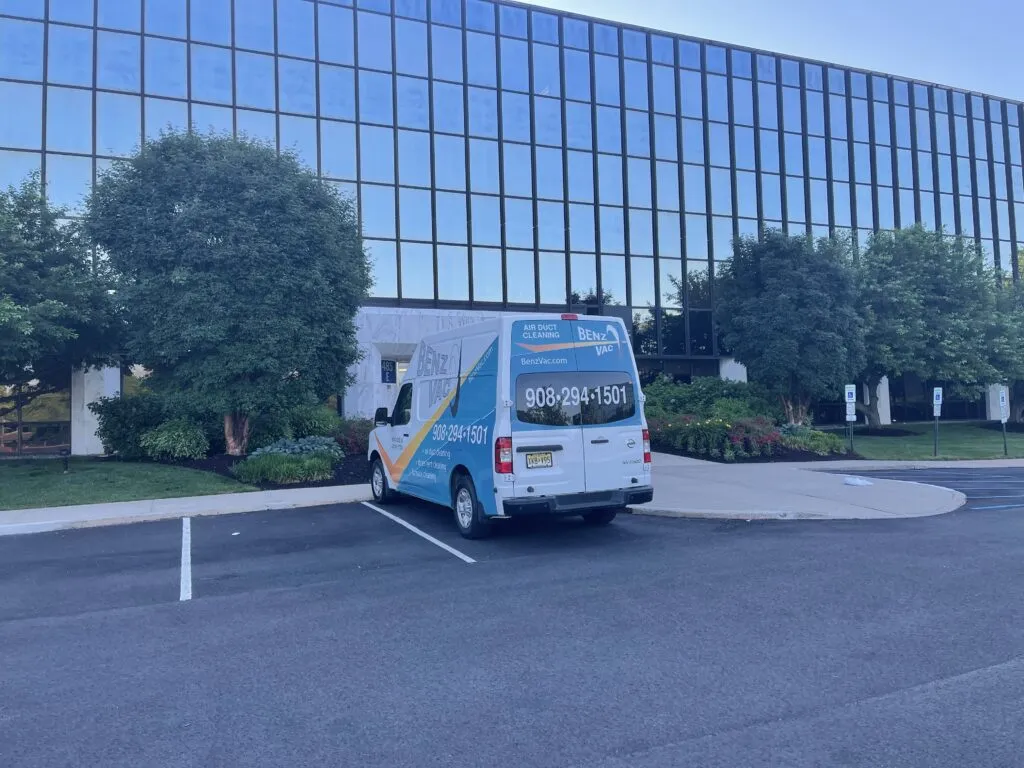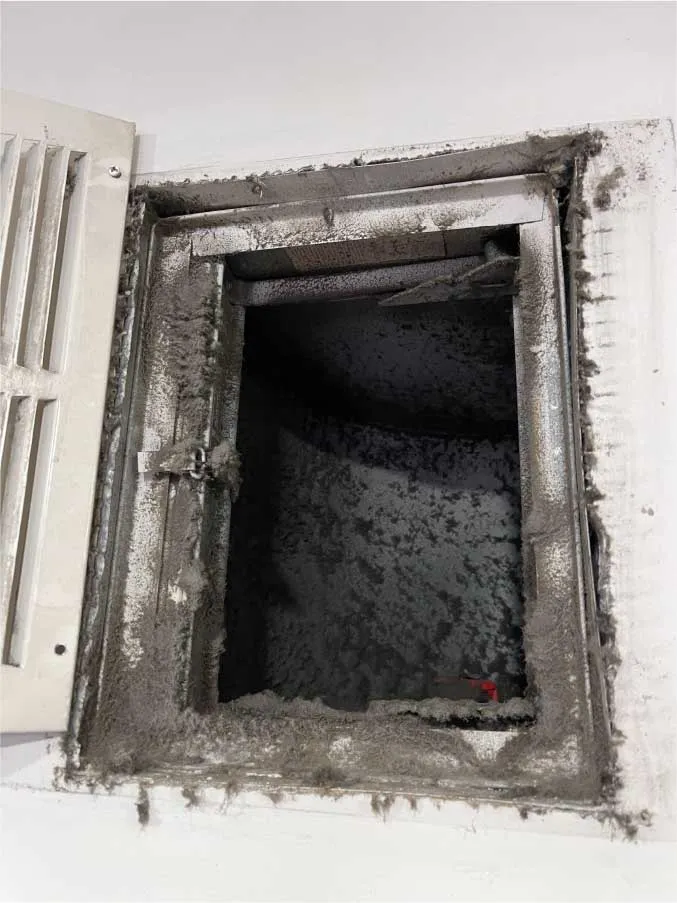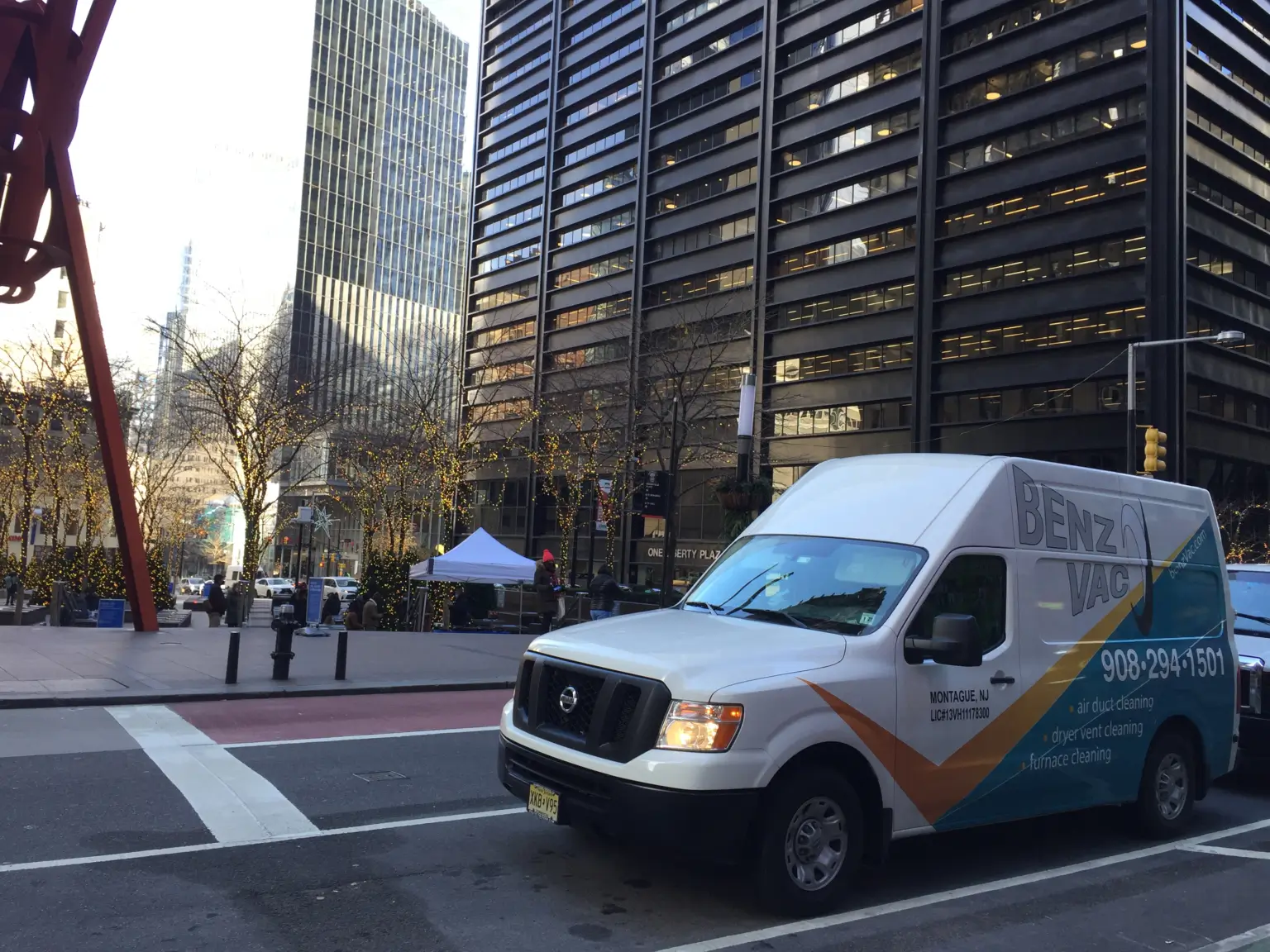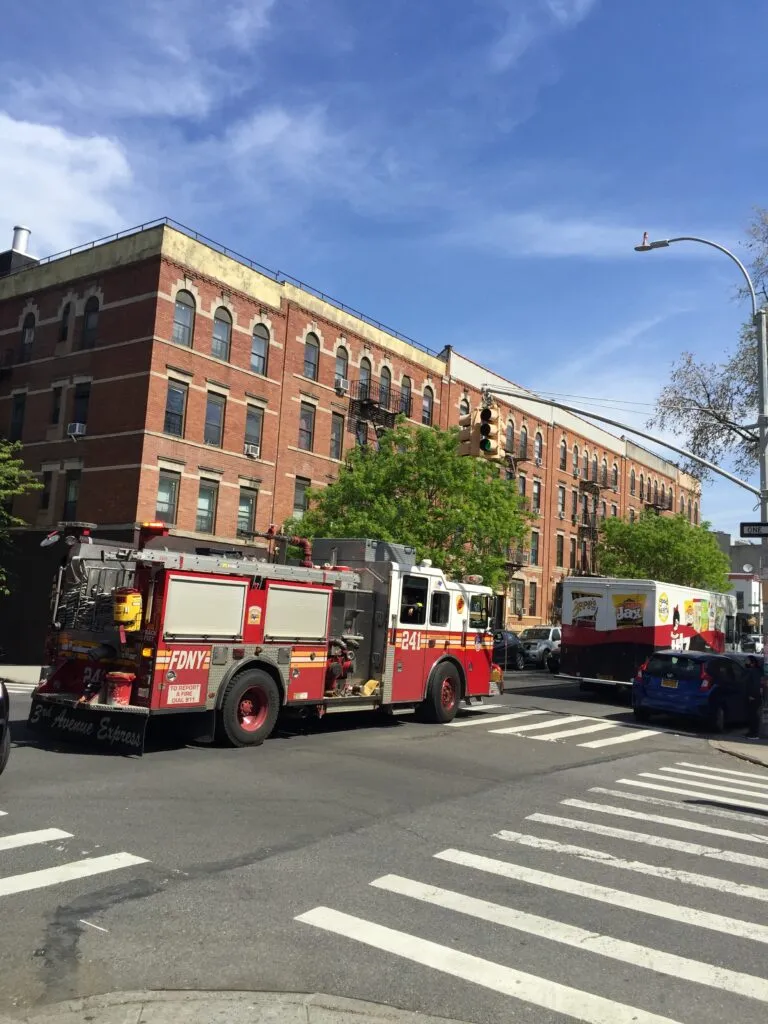Commercial HVAC cleaning is not an easy job, and let us tell you why.
Ductwork is an integral part of a commercial property’s HVAC system. The significance of ductwork is reflected by the fact that the ductwork keeps the air moving throughout a commercial building.
Air ducts are a group of tubes that make up the air distribution system of an HVAC system. A large chancel of ducts is found in every commercial building with an HVAC system. With these ducts, the HVAC system can transfer hot and cold air to various parts of the building.
Materials for Air Ducts
Although sheet metal is typically used, other metals can also be used in some situations to create air ducts. The most common duct materials and their intended uses are listed below.
- Stainless Steel
Air ducts for kitchens and fume exhausts are made of stainless steel material. A few of these ducts are visible, while others are hidden.
- Zinc-Coated Steel
The most commonly utilized material in the production of ductwork is galvanized steel. When heated and cooled, steel ductwork expands and contracts.
- Steel, carbon (Black Iron)
Applications with chimneys and flue pipes typically use carbon steel.
- Aluminum
Aluminum is a widely used duct material. Cleanroom facilities and special exhaust systems frequently use aluminum ducting.
Key Pointers for Keeping the HVAC Duct System in Good Condition
- Maintain and Inspect
Start with the actual equipment. Regularly inspect the heating and cooling systems. Ensure that the device fits the system properly.
Every season requires a new set of filters. Verify the dampers’ functionality. Take a close look at the burner to see whether the burners are positioned correctly or not. If the burners are not adjusted in the right position, seek professional help from commercial HVAC cleaning services to get the burners fitted properly.
- Effective Air Filtration
Sustaining both the flexible ductwork system and the overall HVAC system depends on effective air filtration. Air filter media must be changed frequently, regardless of whether it is mechanical or electronic. This is to prevent an increase in static pressure and to prevent more particles from flowing through the duct system.
Also, it is important to note that the ductwork’s efficiency can be maintained by doing periodic examinations to make sure it isn’t ripped or damaged.
- Design and Installation of a Duct System
It is very important to design and install a properly functioning duct system so that it will last for many years to come. The key points to remember are: to have the long-term cleanliness of flexible ductwork, use a high-quality filter that is replaced frequently and ensure that the connections are properly closed at the time of installation.
If the ductwork system is not maintained, clean the sheet metal ducts. However, never use the powerful brushes (the ones you use for sheet metal duct cleaning) to clean the flexible ducts. A flexible duct that is damaged or filthy needs to be replaced.
Commercial Ductwork Components
Ductwork is a component of every HVAC system, whether it is a commercial or residential one. Ducts are installed on the walls and floors of every room, and each room has a rectangular hole for the construction of a vent to ensure optimal ventilation.
Every duct in the building needs HVAC access doors and panels for simple access to such locations. To ensure the greatest and most effective operation of HVAC system ductwork, it is essential to comprehend the significance of the ductwork parts and design.
A healthy and productive working environment for employees is achieved by the installation of the proper commercial and industrial ducting. The sophisticated system for enhancing air quality, maintaining human health, and guaranteeing equipment operate at peak performance levels is made up of numerous different sorts of ducting components.
- Registers, Outlets, and Diffusers
The airflow via the truck and branch ductwork designs will be divided by the functions of outlets, diffusers, grilles, and registers. To ensure equal air distribution and mixing with the least amount of noise, it will provide conditioned air into the area.
The floor box, also known as the register box, is a galvanized steel grille with moving parts that regulate ductwork airflow.
- Pipes
Pipes are the most crucial components of commercial ducting. They serve as channels for air to move between inner and outer surroundings and across structures. Typically, these are rounded objects constructed from materials like galvanized metal or stainless steel. To prevent airflow obstruction, the pipes must be sufficiently wide.
- Take Offs
In some duct systems, one primary duct may be integrated into multiple smaller ones that split off and provide air to registers, grilles, and diffusers. Such ducts have takeoffs installed inside them to assist in diverting a small amount of air into the subsidiary ducts.
These parts are usually installed into the main wall of a duct.
- AHU
Frequently, the air handling unit, or AHU, is connected to the ductwork. The AHU is a sizable metal box that houses dampers, rack filters or chambers, blowers, sound attenuators, and heating or cooling elements.
In the ventilation system, a metal box with galvanized sheet material or ductwork circulates and regulates the air. AHU units, also known as PU or package units or RTU rooftop units, are offered in both indoor and outdoor designs.
- Elbows and Bends
In a duct line, airflow direction changes are possible thanks to duct elbows, also known as bends. They are ideal for moving the line around narrow spaces so that piping may continue. These bends will usually be at or near 90 degrees, although there are also types that curve at other angles, such as 60, 45, or 30-degree bends.
- Volume Control Dampers
There must be a mechanism to modify how much air flows into the various portions of a duct system for it to work as intended. This mechanism in a ductwork system is managed by volume control dampers. These dampers can be mounted on the ducts and operate either automatically or manually.
A zone damper could be employed for a basic system, whereas a complicated system might benefit more from a variable air volume.
Types of Commercial HVAC Ducts
- Fiberboard Air Ducts
Boards made of compressed resin attached to inorganic glass fibers are used to make fiberboard air ducts. To act as an air barrier and prevent water accumulation, these types of ducts have a foil face on the exterior. They are the least expensive kinds of air ducts and offer hearing and thermal advantages as well.
- Stainless Steel
Ducts made of stainless steel are widely used in business settings. These ducts are made from shaped stainless steel sheets, and they are often either rectangular or round. In stainless steel ductwork, large sections of duct are installed, with smaller sections forming elbow joints. In doing so, the duct must bend. The elbow joints can occasionally be adjusted, allowing for rather accurate angles.
In order to have a durable and stable ductwork system, it is necessary to correctly install the sections of ductwork together. The closely fitted ductwork sections also prevent air leaks at the connections. Additionally, the connections of stainless steel ducts need to be sealed. Metal tape or mastic, a rubbery adhesive made specifically for ducts, can be useful in sealing these ducts. Regular duct tape can dry out over time and damage the seal, so it shouldn’t be used for this kind of sealing.
- Flexible Ductwork
The tube-shaped ducts constructed with wire coils wrapped in flexible, resilient plastic and encased in insulation are known as flexible ducts. These flexible ducts form flexible ductwork in commercial properties for equal airflow distribution throughout the building. Flexible ducting works best in difficult or unusual places when installation or usage of stiff ducts to connect non-flexible ductwork to an air supply outlet is not practicable.
Flexible duct systems must be installed according to certain guidelines, much like the majority of central air conditioning components. For example, to prevent minor sagging or snaking, flexible ducting must be properly anchored and maintained.
Bends, curves, and kinks should be avoided as much as possible since they restrict airflow and undermine the effectiveness and efficiency of the air conditioning system. The use of flexible ducts has several benefits, including quick and simple installation and frequently lower costs than inflexible ductwork.
- Fiberglass Lined Air Ducts
The interior or exterior of some ducts is then further lined with fiberglass. To prevent condensation or to guard against heat loss, this liner serves as an insulator. Additionally, a fiberglass liner reduces the noise produced by the HVAC system as a whole.
Commercial HVAC cleaning
Particularly in commercial facilities, organizations are taking extra measures to guarantee that their premises are clean and secure for both their staff and guests. High-traffic locations like commercial buildings are ideal for the spread of germs and viruses.
The ventilation system of the building is one component that significantly contributes to making people ill. In many commercial duct systems, it is difficult to simply replace a filter since the system as a whole has gotten clogged with contaminants, which causes harmful air to flow even when the filter seems to be clean.
Regular HVAC duct cleaning is the most effective way to eliminate contaminants from the air and make it perfectly safe for breathing. Air duct cleaning services can help you with performing your regular HVAC duct cleaning as they have the required tools and expertise to clean the HVAC system.
Why Do You Need Commercial HVAC cleaning?
Dust can enter the duct system due to deteriorated indoor air quality, ineffective air filtering, and duct leaks. This dust can build up to the extent that it circulates in the indoor air through ac ducts. One of the most obvious signs of dust accumulation in the HVAC duct system is that your workplace is getting dusty more quickly.
The moisture required for mold growth is generated by either a high relative humidity in the structure or water leaking into the ducts. Tiny spores released by mold in the ducts will eventually circulate throughout your entire building. Exposure to mold spores exacerbates asthma and allergies and augments the risk of respiratory infections.
Pest infestations appear to be another important reason for vent and duct cleaning of your HVAC systems. Pests, including mice, squirrels, bees, and other insects, frequently gain access to duct systems. After entering, they leave nesting material, hair, and dead insects behind. Upon being blown by an HVAC system into your rooms, these particles settle and become airborne.
Your ducts may remain clean for many years if the air quality in your building is excellent and you have high-efficiency HVAC air filters. However, there is always a possibility that unforeseen problems will arise. Take a step ahead, and get the HVAC systems of your building frequently checked (every three or four years) for any kind of mold growth, dust build-up, or pest infestations. Professional commercial HVAC cleaning services will conduct a detailed inspection of your HVAC system and guide you through the next required steps.
You may want to ask the local maintenance teams of your building for commercial HVAC cleaning of your HVAC systems. We often try to do things on our own instead of consulting professionals. But this doesn’t go well with everything. HVAC systems are intricately designed and every person can’t disassemble and clean them.
You may not have the required tools and knowledge to perform a thorough duct cleaning. And the worst part is, sometimes we damage the system in our attempts to clean the air ducts. This is something you’ll never want.
To avoid such situations, it is recommended that you seek help from professional commercial HVAC cleaning services and take advantage of their expertise in vent and duct cleaning.
What is Air Duct Cleaning?
A forced-air HVAC system can be cleaned using commercial air duct cleaning services. The system’s accumulation, mold, and debris are all removed during this complete cleaning. Commercial HVAC cleaning is the process of using specialized equipment to clean your duct system, including the supply, return, and intake vents.
In addition, cleaning the air ducts could involve cleaning the grills, the HVAC system, fans, registers, and, if necessary, the furnace. Professional Commercial HVAC cleaning services have access to all parts of the system, even the trickier ones.
How Commercial HVAC Cleaning Can Benefit Your Commercial Building
HVAC duct cleaning can benefit your commercial building in the following ways:
1. An HVAC system that is more durable and effective
2. Long lifespans of HVAC components
3. Good Air Quality
A Durable and Effective HVAC System
Your system needs to work harder to make up for dirty air ducts. The air duct system’s ability to transport air rapidly and readily is hampered if there is too much dust or debris close to the engine. This simply means that a clean HVAC system functions properly while an HVAC system with clogged ducts gives an inefficient performance.
It is advisable to get your air ducts cleaned as soon as possible before the summer. A clean HVAC system will efficiently work to maintain your building temperature and provide you with ultimate relief from the scorching heat. Also, with time for air duct cleaning, you are saved from paying high energy bills.
Long lifespans of HVAC components
Proper maintenance will extend the lifespan of HVAC components just as it does with other types of machinery and devices. In addition to causing your machines to overwork, dust and debris can also cost your business a lot of money in repairs and replacements.
Healthy Air Quality
Your workspace probably has ineffective air filtering and ducting if you find it is dustier than usual. This won’t occur if your air ducts are cleaned properly and regularly inspected. Once the HVAC duct cleaning of all the HVAC systems in your building is done, you’ll get fresh and clean indoor air.
The Best Techniques for Air Duct Cleaning
Over the years, industry standards have been the most frequently utilized techniques for cleaning air ducts. Advancements are being made all the time to keep the process’ ways getting better. But for now, these are the techniques used:
Eliminating The Source
This is one of the most popular air duct cleaning procedures. With mechanical agitation, dirt and debris are loosed, while extraction thoroughly removes everything. This calls for a contractor to use a specialized, strong vacuum to put the HVAC system under negative pressure.
Air Sweep or Vacuum
Although more expensive, this method of duct cleaning is precise. It removes dirt in the best possible way while being incredibly gentle. Brushes are put into the ducts to remove dirt and particles that have clung to interior surfaces while the vacuum sucks air through the system. Unstuck dirt and particles exit the system and the building by traveling via the ducts and into the vacuum.
Point of Contact
This technique is less detailed than the air sweep technique. However, it is completely safe for air ducts and vents. It is less expensive than other methods, but the best cleaning tools are still a vacuum and a rotating brush.
How Frequently Should I Schedule Commercial HVAC cleaning?
To achieve maximum performance, air ducts, like any other HVAC system, need to be cleaned frequently. The NADCA advises cleaning air ducts every three to five years.
However, under particular circumstances, the necessity for air duct cleaning is more pressing. For example, food manufacturers need duct cleaning services regularly, semi-annually, and annually since the food particles they track into their systems can cause mold and pest problems. The same is true for industrial processes that produce flammable dust.
Hospitals also call for regular HVAC duct cleaning since they are sensitive to any form of particulate endangering patients.
What Is the Typical Time for a Commercial HVAC Cleaning?
It might take a day, a weekend, three or four weeks, or longer, depending on the size and breadth of your facilities. An office that isn’t too big can be cleaned on a weekend or in less than a week.
However, many variables affect cost and time projections, including size, accessibility, ductwork type, degree of contamination, and the needed crew size of the system.
Why Do I Need a Commercial HVAC cleaning?
If you are completely unaware of the ins and outs of ductwork, do not attempt to damage the system by cleaning air ducts yourself. Rather, have professional assistance from air duct cleaning services just like Benzvac as our service includes HVAC mechanical system inspections, investigations, remedial cleaning, and restoration. We help our customers to discover the root cause of the problem hampering the HVAC system’s performance and offer them the best possible solution.
Final Thoughts
Air duct cleaning is vital in commercial buildings to ensure the good health of employees. The accumulation of dust, dander, mold, and dirt in the ducts makes the system work harder, resulting in more energy consumption and higher energy bills. Apart from the build-ups, these particulate materials pose a risk to the health of people as the contaminants circulate throughout the building whenever the HVAC system is turned on.
You can avoid this entire situation with the regular air duct cleaning service of your HVAC system.




